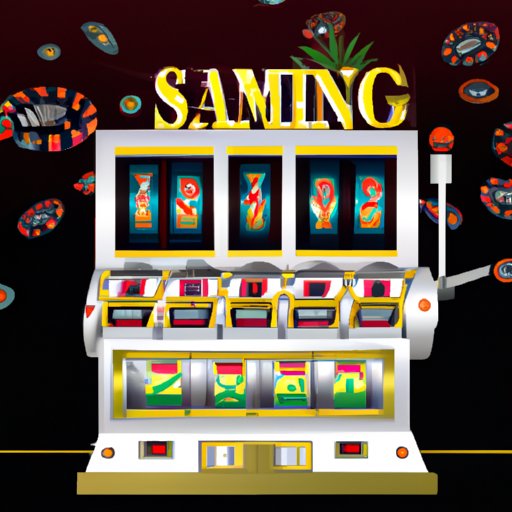Introduction
A slot machine is a gambling device that players use to try their luck at winning money or prizes. The machines have become a staple in casinos around the world, and can be found in pubs, arcades, and even online. This article will explore the history of slot machines, how they work, and strategies to employ when playing.
History of Slot Machines
Slot machines have a long and fascinating history. They first appeared in the late 19th century in San Francisco and were known as “One-Armed Bandits” due to their large mechanical levers on the side. Over time, they evolved into the modern digital versions we know today.
Origins of Slot Machines
The first slot machines were invented by Charles Fey in 1895. He designed a simple 3-reel machine with symbols such as diamonds, hearts, and spades, which was known as the Liberty Bell. The most popular symbol was the bell itself, which would give players a payout if it landed on all three reels. This machine laid the foundation for modern slot machines.
Evolution of Slot Machines
Since then, slot machines have undergone several transformations. Mechanical machines gave way to electronic models in the 1960s, which featured more advanced graphics and sound effects. In the 1990s, video slots became popular, with 5-reel games featuring multiple pay lines and bonus rounds. Today, slot machines are available in virtually every casino and come in a variety of themes and sizes.
Anatomy of a Slot Machine
Before discussing how a slot machine works, let’s take a look at its anatomy. A typical slot machine consists of a few key components: reels, pay lines, and buttons.
Reels
The reels are the most visible part of a slot machine, as they are the spinning cylinders with various symbols printed on them. Depending on the type of slot machine, there can be anywhere from 3 to 5 reels.
Pay Lines
Pay lines are the virtual lines that run across the reels. When a certain combination of symbols appears on the pay line, the player will receive a payout. The number of pay lines varies depending on the type of machine, but most modern machines have at least 10.
Buttons
The buttons are used to control the machine. Most machines have a “Spin” button, which starts the spinning of the reels, as well as buttons to adjust the number of coins being played and the size of the bet.
How Does a Slot Machine Work?
Now that we’ve explored the anatomy of a slot machine, let’s take a look at how it works. Slots are powered by a random number generator (RNG), which is a computer program that randomly selects numbers that correspond to the symbols on the reels. Here’s a closer look at the process:
Inserting Coins
When a player inserts coins into the machine, the RNG will begin selecting numbers. The numbers are determined by the position of the reels and the symbols on them.
Random Number Generator
The RNG will randomly select numbers between 1 and the number of symbols on each reel. For example, if there are 20 symbols on each reel, the RNG will select a number between 1 and 20. If the selected number corresponds to the symbol on the reel, then the player will receive a payout.
Payout System
The amount of the payout is determined by the number of coins inserted and the size of the bet. For example, if the player bets 2 coins and the selected symbol pays out 5 coins, the player will receive 10 coins. The payout system is also affected by the paylines, as some combinations may result in larger payouts than others.
Slot Machine Strategies
Although slot machines are based on luck, there are a few strategies that players can employ to increase their chances of winning. Here are a few tips to keep in mind:
Understanding Paylines
It’s important to understand how paylines work before playing a slot machine. Some machines only pay out when certain combinations appear on the payline, so it’s important to familiarize yourself with the rules of the machine before playing.
Setting Limits on Losses
Another important strategy is to set limits on losses. It’s easy to get carried away when playing slot machines, so be sure to set a limit on how much money you’re willing to lose before starting to play.
Slot Machine Regulations
In addition to strategies, there are also regulations that casinos must adhere to when it comes to slot machines. These regulations vary from country to country, but here are a few common ones:
Age Limits
Most countries have age limits for playing slot machines. Generally, players must be 18 or older to play.
Maximum Bet Amounts
Most countries also have laws that limit the maximum amount that can be bet on a single spin. This is to prevent players from betting too much money and running up large debts.
Conclusion
Slot machines are a popular form of gambling that has been around for over a century. Understanding how they work and employing strategies can help players increase their chances of winning. Casinos must also adhere to certain regulations when it comes to slot machines, such as age limits and maximum bet amounts. With a bit of knowledge and luck, playing slot machines can be an enjoyable experience.
(Note: Is this article not meeting your expectations? Do you have knowledge or insights to share? Unlock new opportunities and expand your reach by joining our authors team. Click Registration to join us and share your expertise with our readers.)
